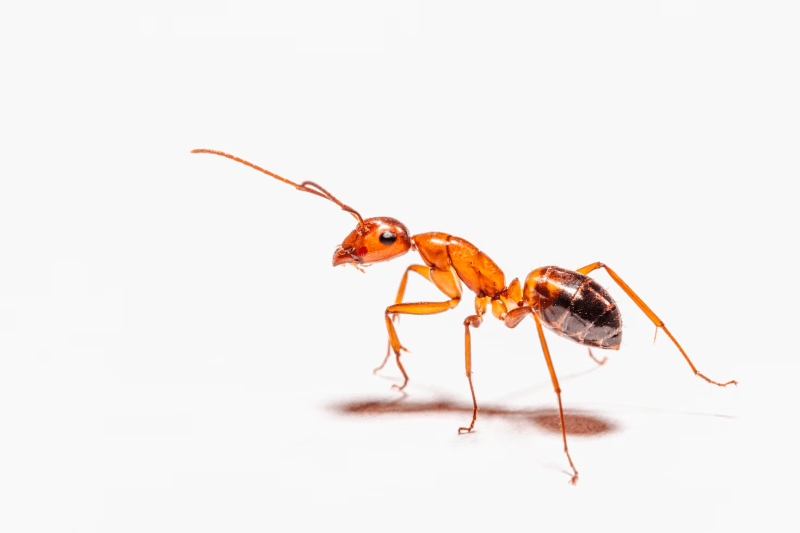Adam Siwiec ’23, a Grove resident, rarely eats in his room, but he was greeted by an unpleasant surprise on the fateful day that he did.
“After eating one croissant, there was literally a flake on the ground,” Siwiec said. Immediately, ants swarmed around the singular crumb in a lasso, forming what Siwiec described as “a trail and a ring.”
Siwiec’s experience is not unique on campus, and no student dorm is spared the threat of these interloping insects, who not only relish the treats left behind by unsuspecting students but also the water and warm, dry environments provided by campus residences.
Stanford’s ants belong to an invasive species known as the Argentine ant, which are various shades of brown and range from about two to three millimeters long.
Although food is an undeniable perk, these ants primarily enter buildings to quench their thirst and find a cozy space to build their colony, according to biology professor Deborah Gordon M.S. ’77, who studies ant colonies. In this search, they crawl their way into student dwellings through cracks in the wall or tracing condensation on pipes.
Gordon added that the prevalence of ants in residences depends on the weather conditions. For instance, during peak drought, the ants come inside as they are dependent on humans for water. Furthermore, improving weather conditions will spur the ants’ departure from the dorms.
During peak seasons like the summer, colony size can mushroom to around 15 to 20 nests, spanning 250 square meters. Now, with winter on the horizon, Gordon said the ants will begin aggregating, reducing the ants’ territorial surface area.
The ant’s name is in reference to where the species originated. The species dispersed across the globe as Argentinian sugar shipments reached zones with Mediterranean climates with temperate conditions where the ants could thrive.
What then to do if you find yourself with an ant infestation on your hands?
Contrary to popular belief, Gordon said spraying insecticides is not a solution. Killing the ants aboveground does not put a dent in the entire colony’s population, Gordon said, adding that conventional insecticides such as Malathion may even have neurotoxic effects on both insects and humans.
To ward off ant intruders, Gordon recommended environmentally-friendly remedies such as clove oil and boric acid-based baits. But even traps may ultimately be futile. For traps to work, Gordon explained, worker ants must take the poison back to their sole queen, who in turn dies and cannot produce more progeny. But Argentine ants may have multiple queens, blunting the effect of the poison and potentially limiting its effects to a single nest within the colony.
Students aiming to fend off the Argentine ants may have a natural ally. Argentine ants are invasive but the native winter ant is the unsuspected antihero of this story.
According to Cooper Shea B.S. ’22 M.S. ’23, who conducted ant research with Gordon, “They’re the only ant that resists the Argentine ant by squirting little droplets of poison.” The winter ants “also resist by competing successfully with the Argentine ants for baits,” added Gordon.
Students contacting Residential & Dining Enterprises (R&DE) about ant problems may receive radio silence, but that may be because “really nothing can be done,” Shea said. (R&DE did not respond to multiple Daily requests for comment on the matter.)
Although the chances of eradicating the ant infestations on campus are virtually nil, some students have taken matters into their own hands, either with a reliable wet wipe or store-bought traps.
“My roommate and I are now investing in ant traps,” Siwiec said, who does not plan on eating in his room anytime soon.
